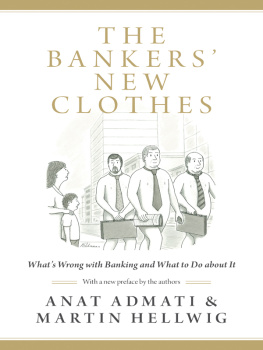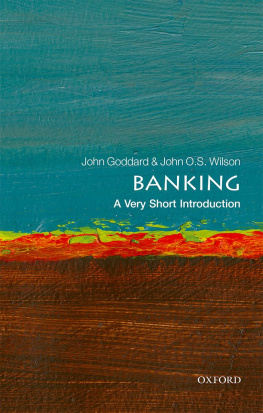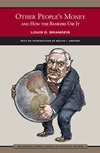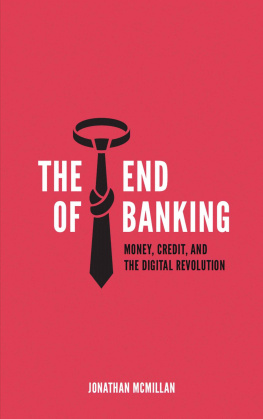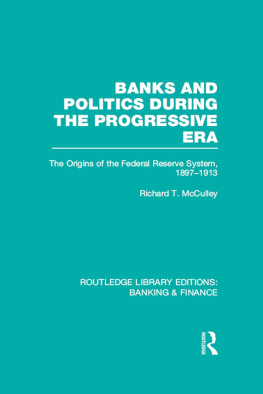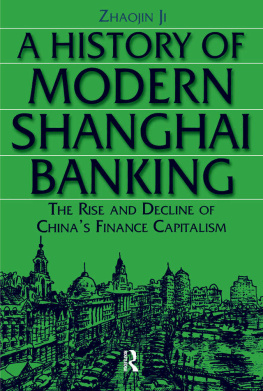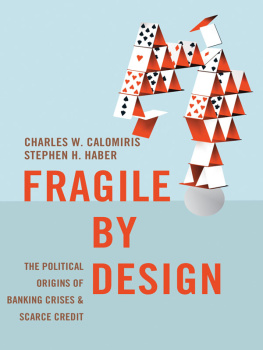
An important book for readers interested in what has been done, and what remains to be done, when it comes to safeguarding financial institutions.
Kirkus Reviews
This books aim, decisively achieved, is to de-mystify the public conversation about banking so we can all understand how threadbare the industry is.
Diane Coyle, Enlightened Economist blog
This title is a must read for management and human resource professionals within the banking industry as well as government policymakers. With its clear explanations, many examples, and analogies, the book is accessible to readers who do not have business backgrounds and who want to better understand banking.
Library Journal
Powerful.... The authors persuasively argue that the solution is higher levels of equity capital throughout the banking industry to offset the impact of the implied government protections against failure.
Economist.coms Free Exchange
Ms. Anat gets banking, and gets it better than most. The fact that she is ruffling feather relates more to the fact that she is questioning deeply heldyet hardly ever challengedbelief systems within the industry, than any lack of understanding.
Izabella Kaminska, FinancialTimes.coms Alphaville blog
Admati and Hellwig have done something extraordinary. They took [banking] frustration and all its complex details and gave it a simple narrative, one that both explains what banks have been getting away with and what we might ask that Congress do about it.
Brendan Greeley, Bloomberg Businessweek
Admati and Hellwig offer a simple prescription for this complex world.
Thomas G. Donlan, Barrons
Anat Admati and Martin Hellwig are academics with a gift for taking the mind-numbing minutiae of banking and presenting it in a way that the average reader can understand. One by one, the self-serving protests of the banking industry against tougher regulations are lined up and struck down in The Bankers New Clothes.... The authors map out the regulatory flaws that make it easy for debt-junkie bankers to get rich when times are good, and leave them hanging around protesting when times are worse thanks to their own recklessness.
Susan Antilla, Bloomberg News
Admati and Hellwig explain, in laymans terms, some of the silly arguments bankers make for keeping to the status quo and preventing any new regulation of the banks from ever being enacted. And they do a great job.... Admati and Hellwig have made a gift to you. You dont have to go wrestle with banks financial statements or their annual reports or their 10Qs. You dont need to pull out your old accounting textbooks or call your college economics teacher to have her explain to you again why debt leverage increases risk. Admati and Hellwig have done all the hard work for you. But, you have to read their book.
John R. Talbott, Huffington Post
Ms. Admati and Mr. Hellwig, top-notch academic financial economists, do understand the complexities of banking, and they helpfully slice through the bankers self-serving nonsense. Demolishing these fallacies is the central point of The Bankers New Clothes.
John Cochrane, Wall Street Journal
The Bankers New Clothes is wowing critics of fragile banks with a simple and attractive message: Force banks to have much thicker cushions of capital and you can make them safer without paying any cost in terms of higher interest rates, less lending, or lower economic growth.
Peter Coy, Bloomberg Businessweek
I regard The Bankers New Clothes as the most important contribution to the analysis of banking regulation in the past twenty five years.... This book should be required reading for bank regulators, bankers, and legislators; it should also do a lot to demystify banking for the concerned public. It is beautifully written and forcefully argued.... [T] his is a terrific book. It took courage, a deep understanding of banking and finance, and first-rate expository skills to write.
Morris Goldstein, Senior Fellow, Peterson Institute for International Economics, from event introduction speech on February 11, 2013
Financial regulation has become a hot topic in the wake of the recent crisis; many complex proposals have ensued, and a dizzying array of new acronyms and agencies has emerged. But in their new book, Admati and Hellwig make a forceful case for a classic and simple solution to excessive, unregulated lending: higher capital ratios for banks.
Finance & Development
[A]n important new book called The Bankers New Clothes... offers what the Dodd-Frank legislation mostly lacked: a simple and elegant solution to the problem of financial stability. They argue that banks should fund themselves with more equity and less debtor, to put it bluntly, that banks should risk more of their own money, and less of everyone elses.
Christopher Matthews, Time.com
Admati and Hellwig dont just criticize bankers. The real strength of their book is that they walk their readers through the balance sheet and to a regulatory answer to the banking problem, an answer thats elegant in its simplicity and far-reaching in its potential to prevent and manage financial crises.
Randolph Walerius, Roll Call
One can only hope that non-financial readers who want to improve the focus of their frustration will find their way to this book. Perhaps, then, policy-makers will start to feel pressure for smarter change.
Peter Morris, Financial World
THE
BANKERS NEW CLOTHES

Whats Wrong with Banking and What to Do about It
ANAT ADMATI and MARTIN HELLWIG
PRINCETON UNIVERSITY PRESS
Princeton and Oxford
Copyright 2013 by Princeton University Press
Published by Princeton University Press, 41 William Street, Princeton, New Jersey 08540 In the United Kingdom: Princeton University Press, 6 Oxford Street, Woodstock, Oxfordshire OX20 1TW
press.princeton.edu
Jacket illustration by Rich Feldman
All Rights Reserved
Ninth printing, first paperback printing, with a new preface by the authors, 2014 Paperback ISBN 978-0-691-16238-6
The Library of Congress has cataloged the cloth edition of this book as follows
Admati, Anat R.
The bankers new clothes : whats wrong with banking and what to do about it / Anat Admati and Martin Hellwig.
p. cm.
Includes bibliographical references and index.
ISBN 978-0-691-15684-2 (hbk. : alk. paper)
1. Banks and banking. 2. Financial institutionsGovernment policy. 3. Financial crisesPrevention. I. Hellwig, Martin F. II. Title. HG1586.A23 2013
332.1dc23
2012039277
British Library Cataloging-in-Publication Data is available
This book has been composed in Minion Pro with DIN display by
Princeton Editorial Associates Inc., Scottsdale, Arizona.
Printed on acid-free paper.
Printed in the United States of America
10 9
For our families
CONTENTS
PREFACE TO THE PAPERBACK EDITION
T he fifth anniversary of the Lehman Brothers bankruptcy led many to ask whether the financial system is safe today. The answer to this question is no. The key factors that caused the subprime mortgage crisis to upset the global economy are still in place. Politicians and regulators have allowed effective reform to be stalled.
Bankers and their supporters often threaten that proposed regulation will harm credit and economic growth. Such threats scare policymakers. Yet the explanations given for the claims, if any, are nonsensical or misleading. Actually, the sharpest downturn in lending and growth since the Great Depression occurred in the fall of 2008. This downturn was not due to regulation, but to the reckless practices and excessive fragility of banks and the financial system. The suggestion that making banks safer would be harmful for us all is simply false.
Next page
